The X-3 was one of the X series of aircraft designed during the early days of jet-powered aircraft.
Douglas engineers wanted an aircraft with a maximum speed of 2,000 mph.
Engineers have to incorporate countermeasures for thermal thicket in supersonic aircraft design.
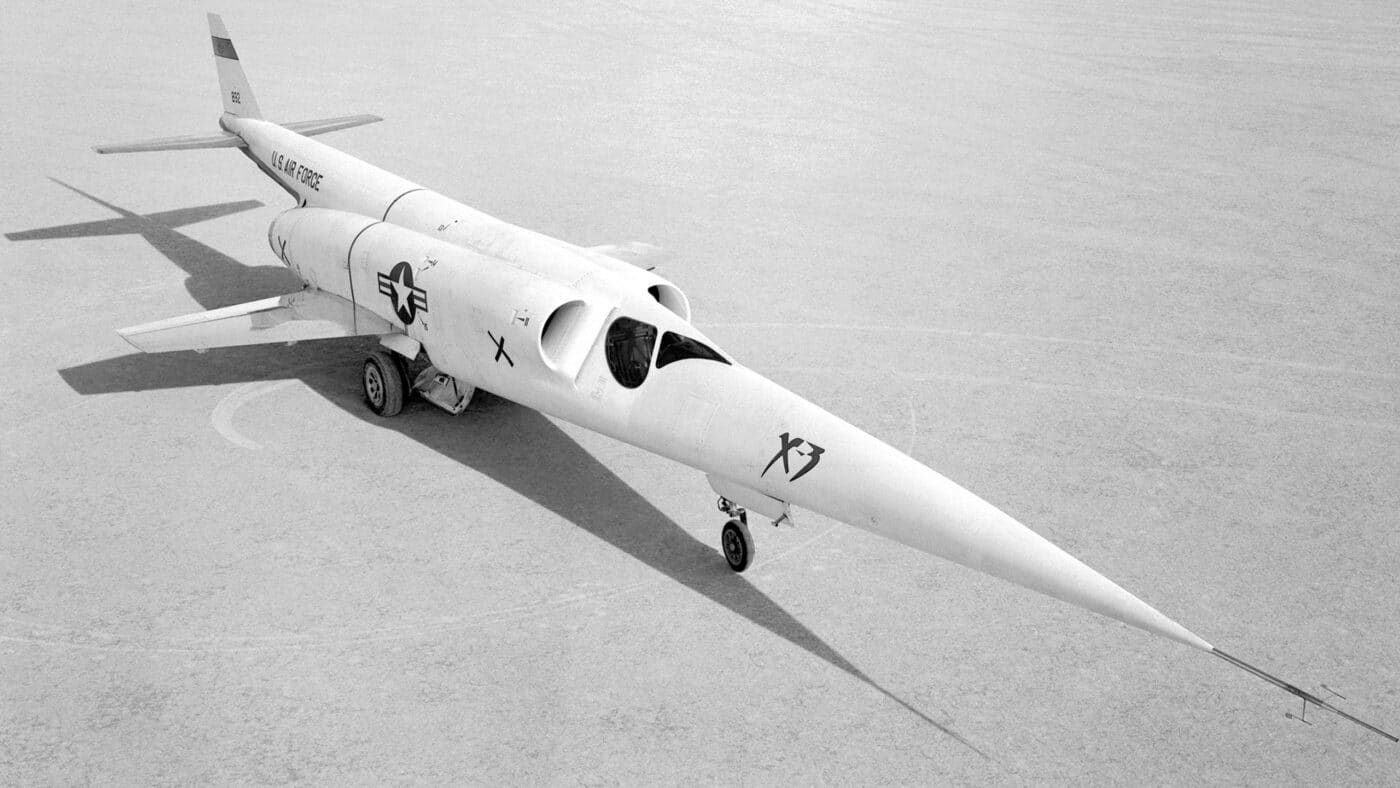
The Douglas X-3 Stiletto represented the cutting-edge in jet-era design. Image: NARA
The fastest speed achieved in the X-3 was Mach 1.208 while in a 30-degree dive.
The official first flight came a few days later when Bridgeman flew the aircraft for about 20 minutes.
This shows up when a maneuver in one axis causes an uncommanded maneuver in one or two others.
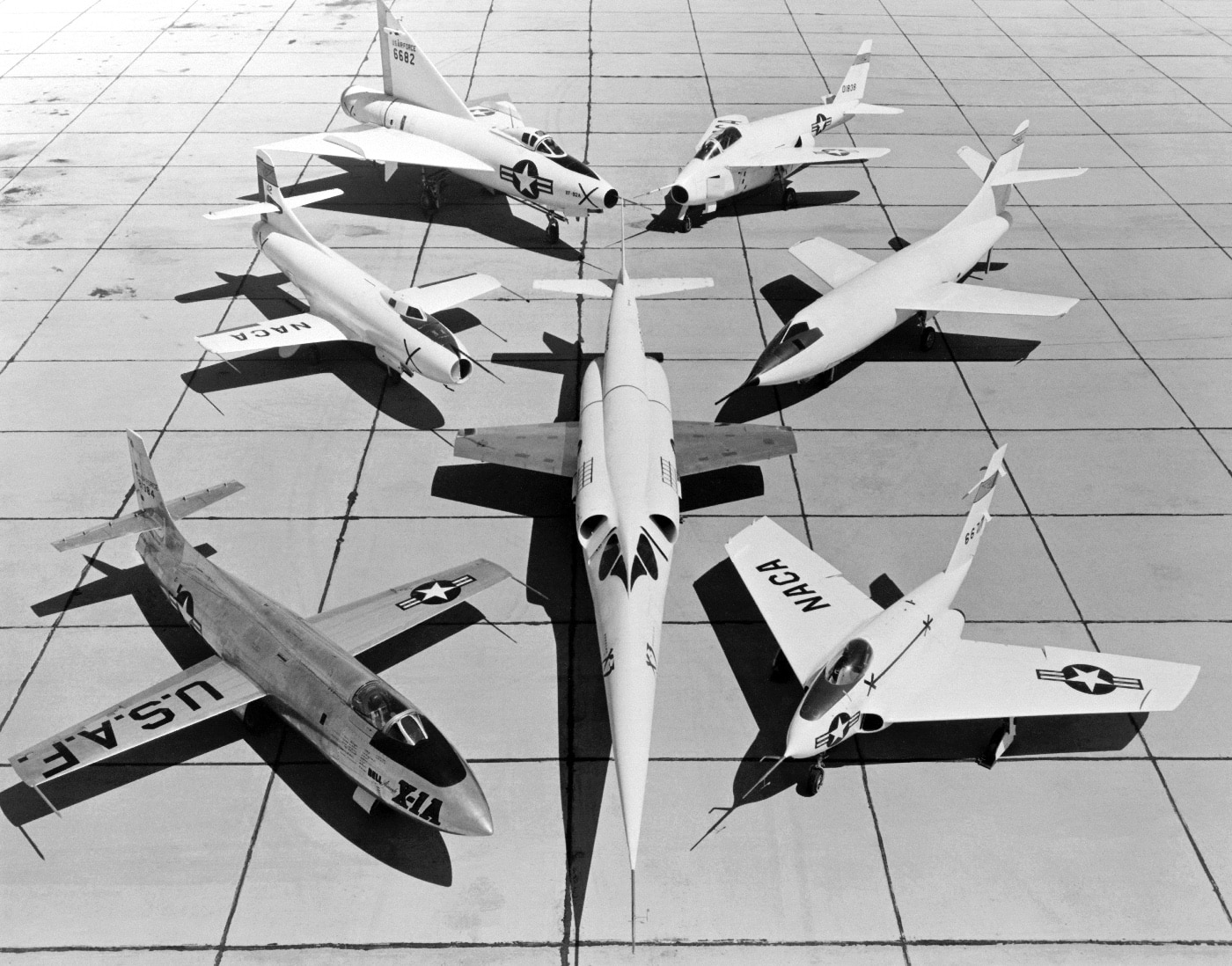
Research aircraft at Dryden Flight Research Center. The X-3 is in the center. Clockwise from left: Bell X-1A, the Douglas D-558-1, Convair XF-92A, Bell X-5, Douglas D-558-2, and Northrop X-4. Image: NASA
NACA test pilot Joseph A Walker was at the controls conducting stability testing.
Walker rolled the aircraft while flying at Mach 0.92 at 30,000 feet.
Walker was able to bring the X-3 back under control after about five seconds.

This in-flight NACA High-Speed Flight Station photograph of the X-3 Stiletto illustrates the aircraft’s long slender fuselage and the small wings. Image: NASA
Walker then performed the next test.
He started a dive and, when the aircraft reached Mach 1.154, he again rolled the aircraft.
Walker got the aircraft under control and returned to base.
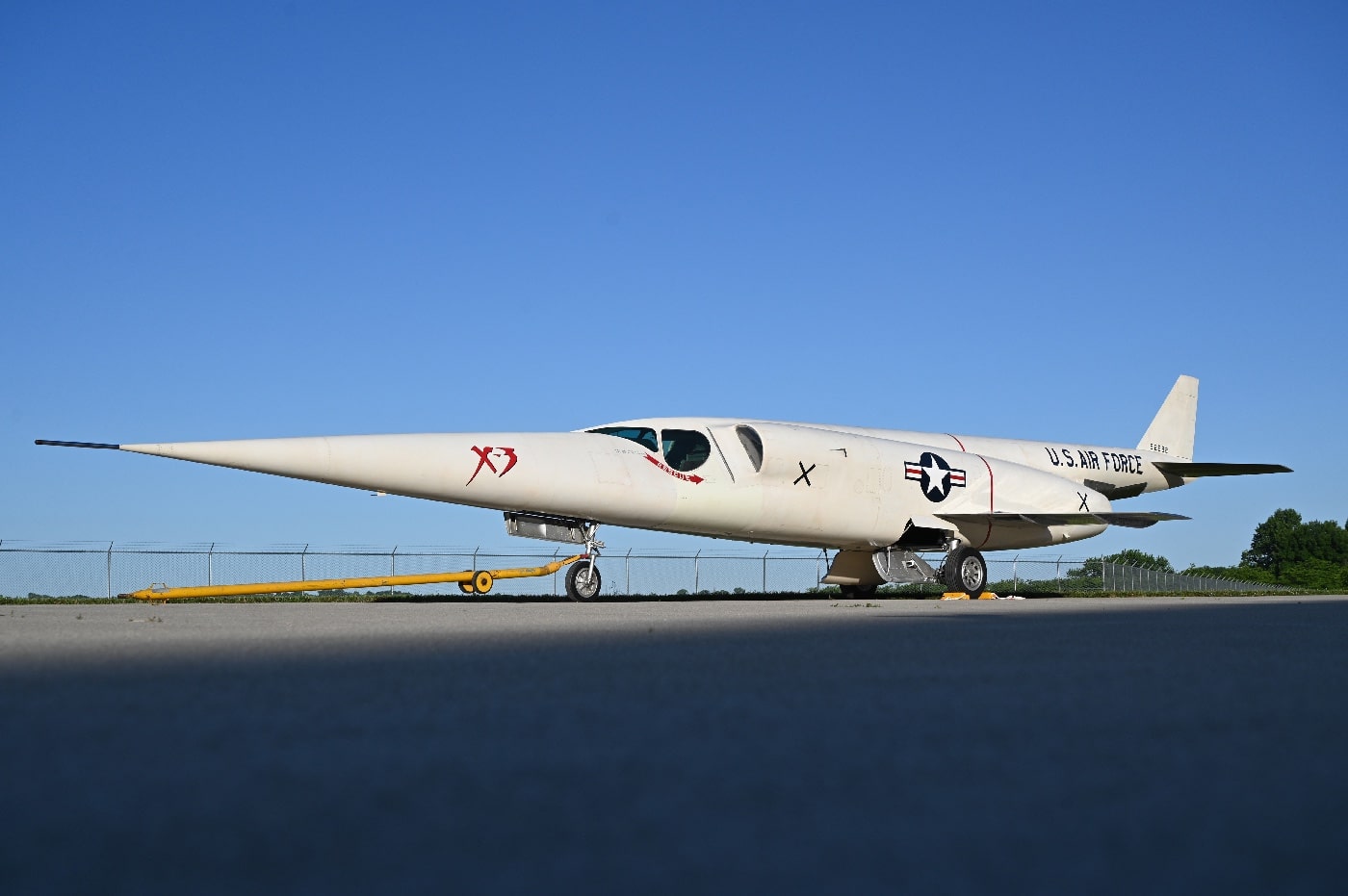
Douglas X-3 Stiletto resting outside of the R&D Gallery at the National Museum of the USAF on May 28, 2024. Image: Ken LaRock/U.S. Air Force
Upon inspection, it was determined the X-3 had been stressed to its limit.
The plane was grounded for almost a year while engineers researched this phenomenon.
It was discovered that North American Aviation experienced a similar problem with itsF-100 Super Sabretest aircraft.

The X-3’s primary mission was to investigate the design features of an aircraft suitable for sustained supersonic speeds, which included the first use of titanium in major airframe components. Image: NASA
When testing resumed, the program never explored roll stability and control limits again.
Walker made another ten test flights without mishap.
His Starfighter exploded, with both aircraft crashing onto the desert floor near Barstow, California.
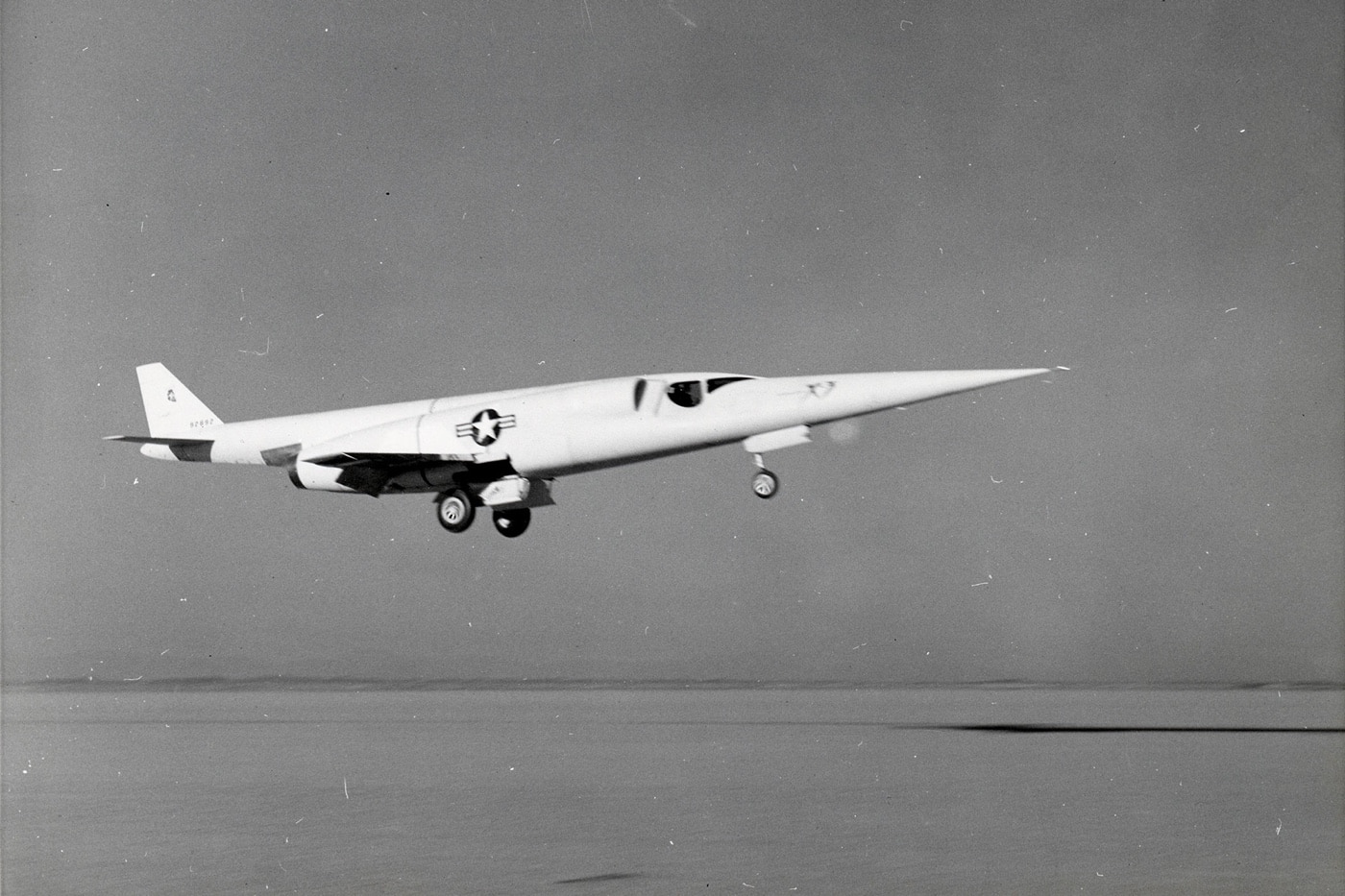
Unlike the X-1 and X-2, which were released in mid-air from larger aircraft, the X-3 operated in a more conventional manner by taking off from the ground. Image: U.S. Air Force
The high speeds required for takeoff (260 mph) and landing caused changes in aircraft tire design.
Go to forum thread
National Museum of the United States Air Force
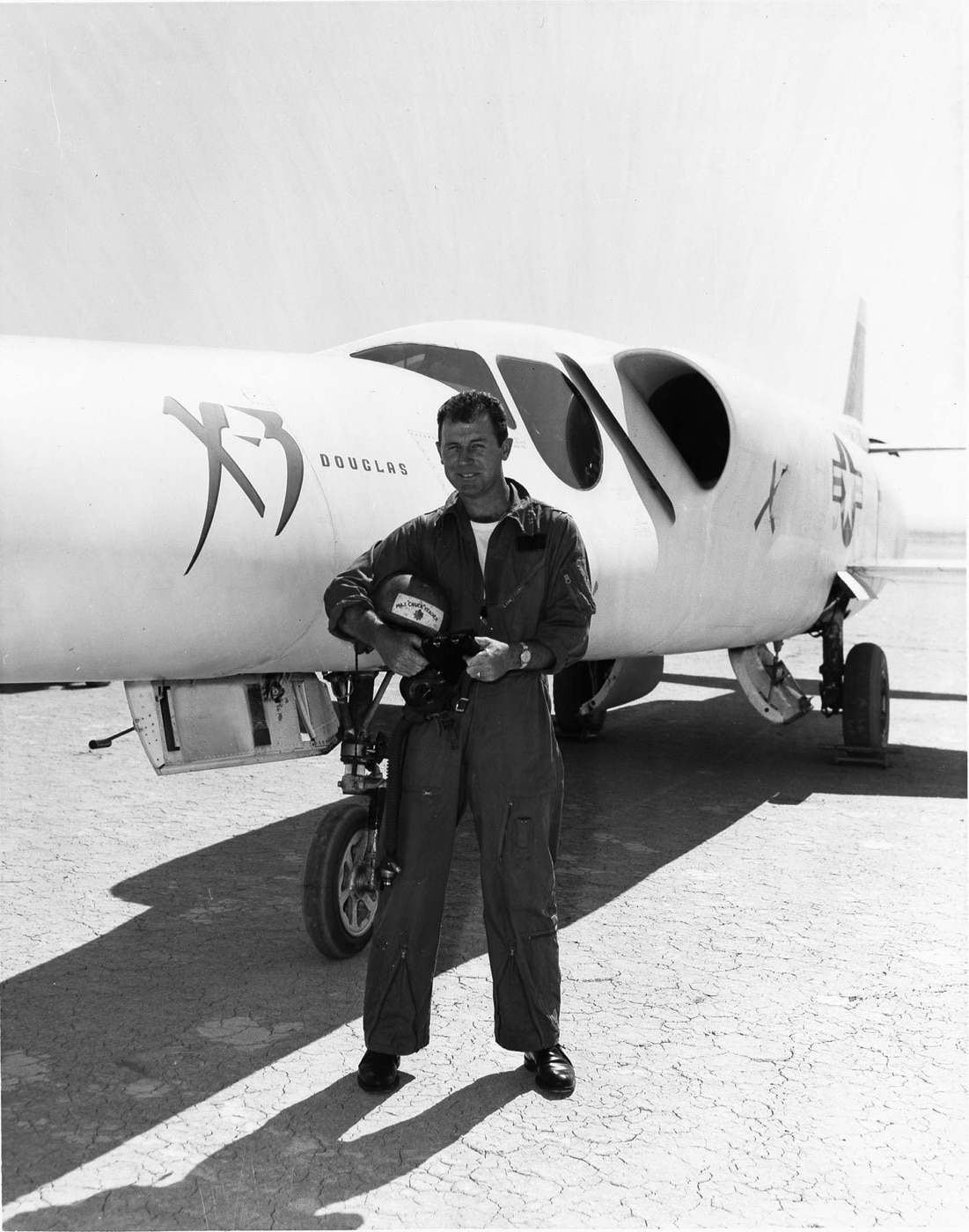
Chuck Yeager, the first man to break the sound barrier, poses with the Douglas X-3 Stiletto. Image: U.S. Air Force
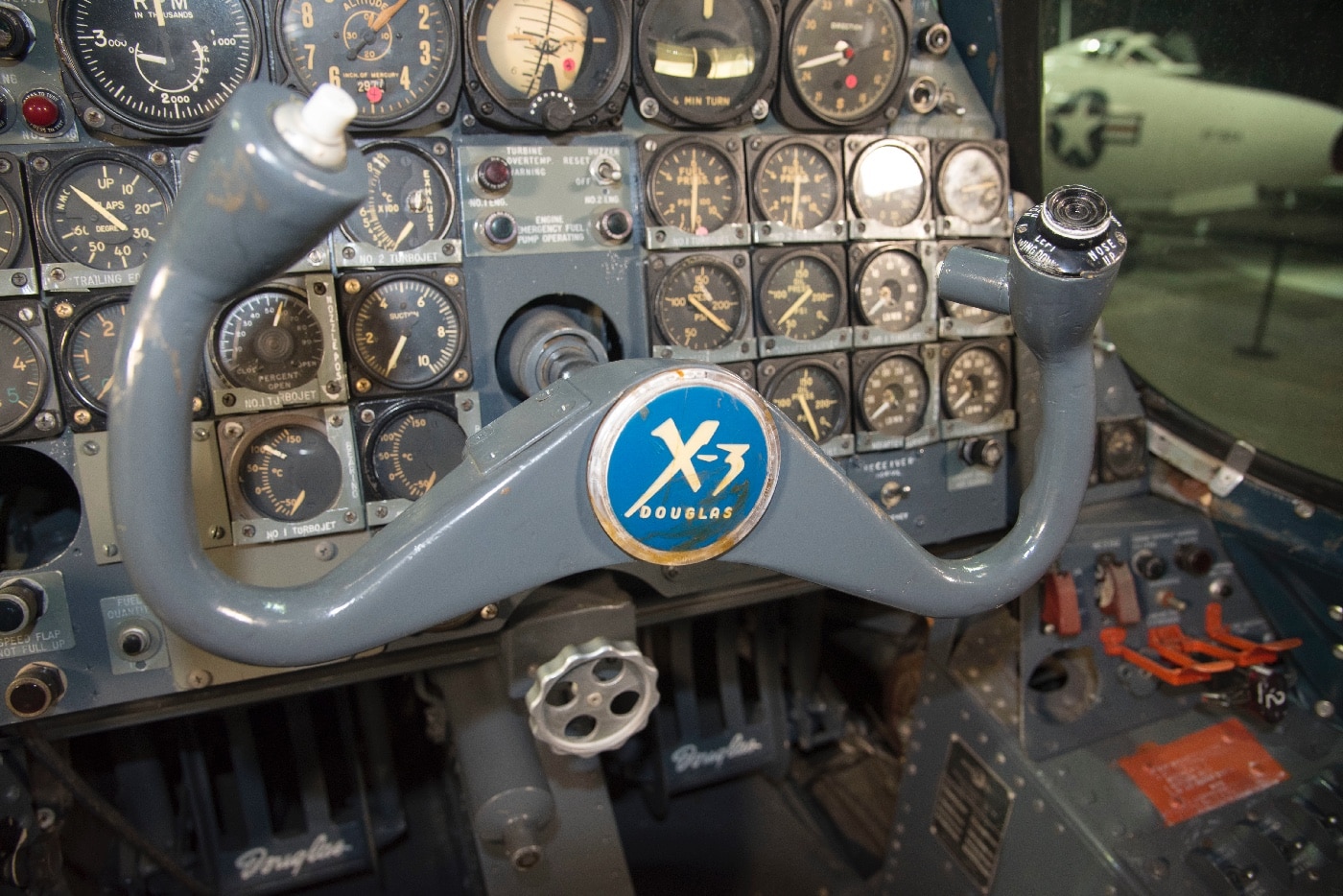
Douglas X-3 Stiletto cockpit at the National Museum of the United States Air Force. This aircraft is on display in the museum’s Research & Development Gallery. Image: U.S. Air Force
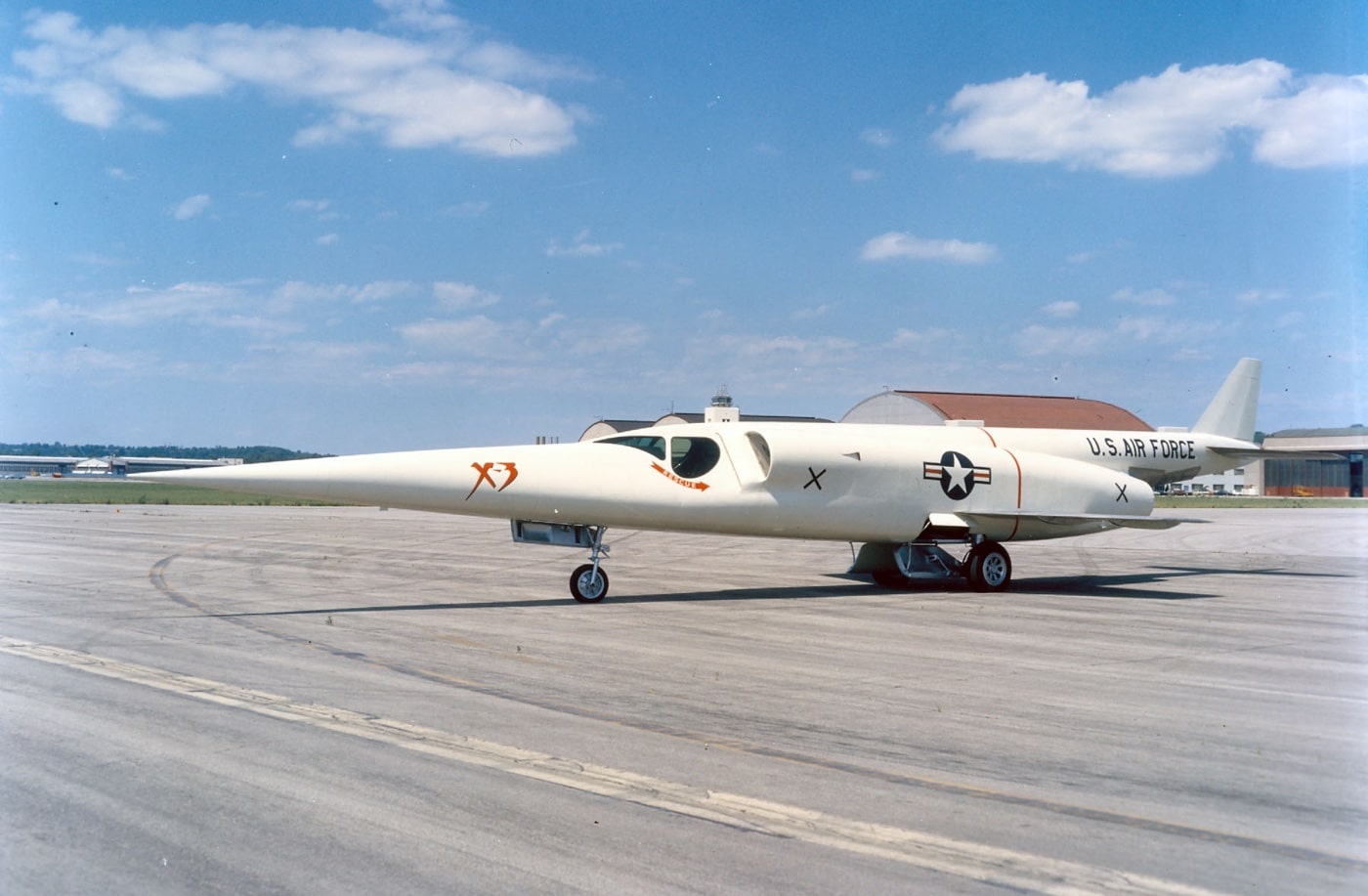
This view of the Douglas X-3 Stiletto at the National Museum of the United States Air Force shows how sleek the design was. Image: U.S. Air Force
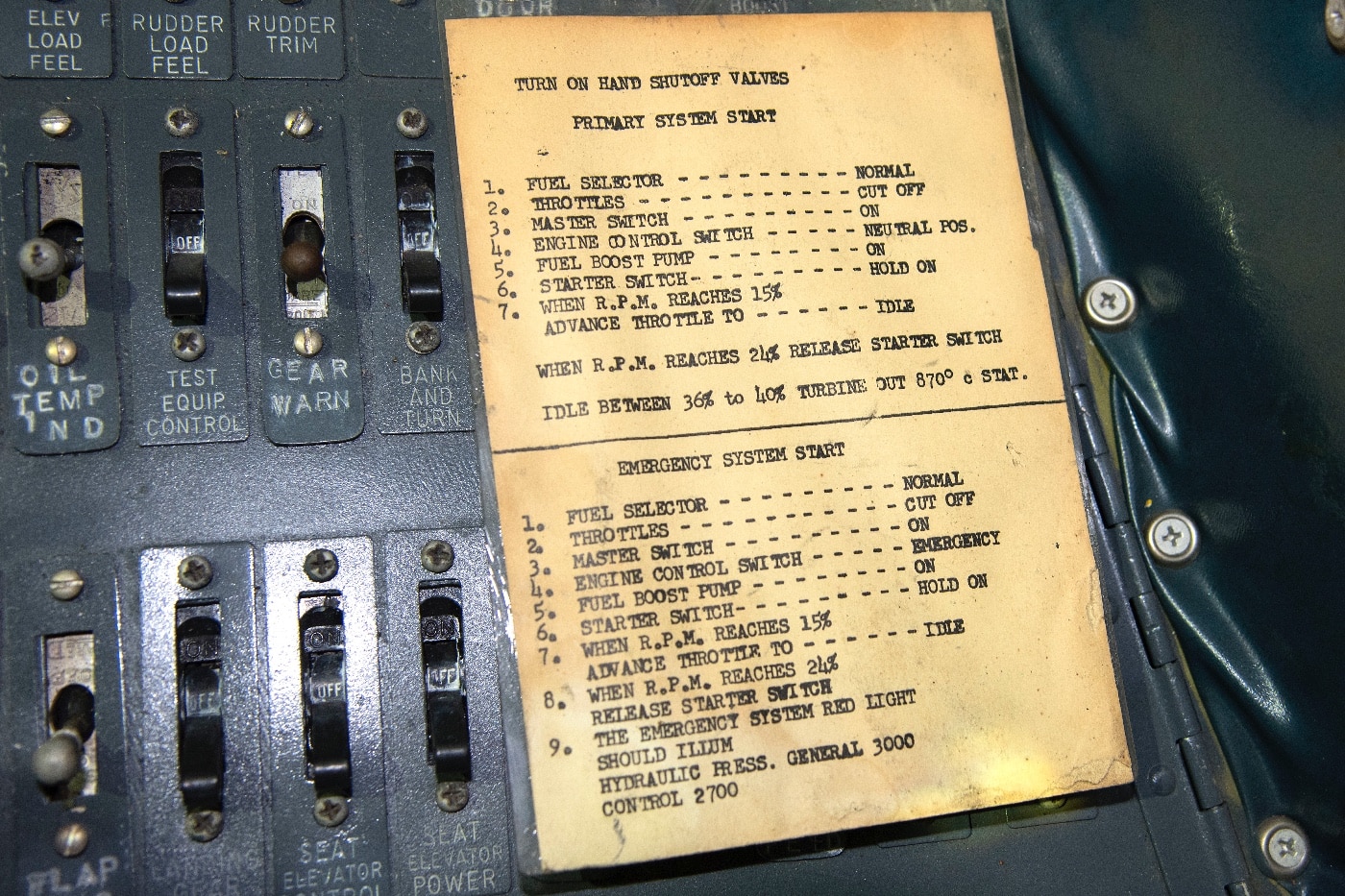
Shown here are the normal and emergency startup procedures for the X-3 Stiletto. Image: Ken LaRock/U.S. Air Force
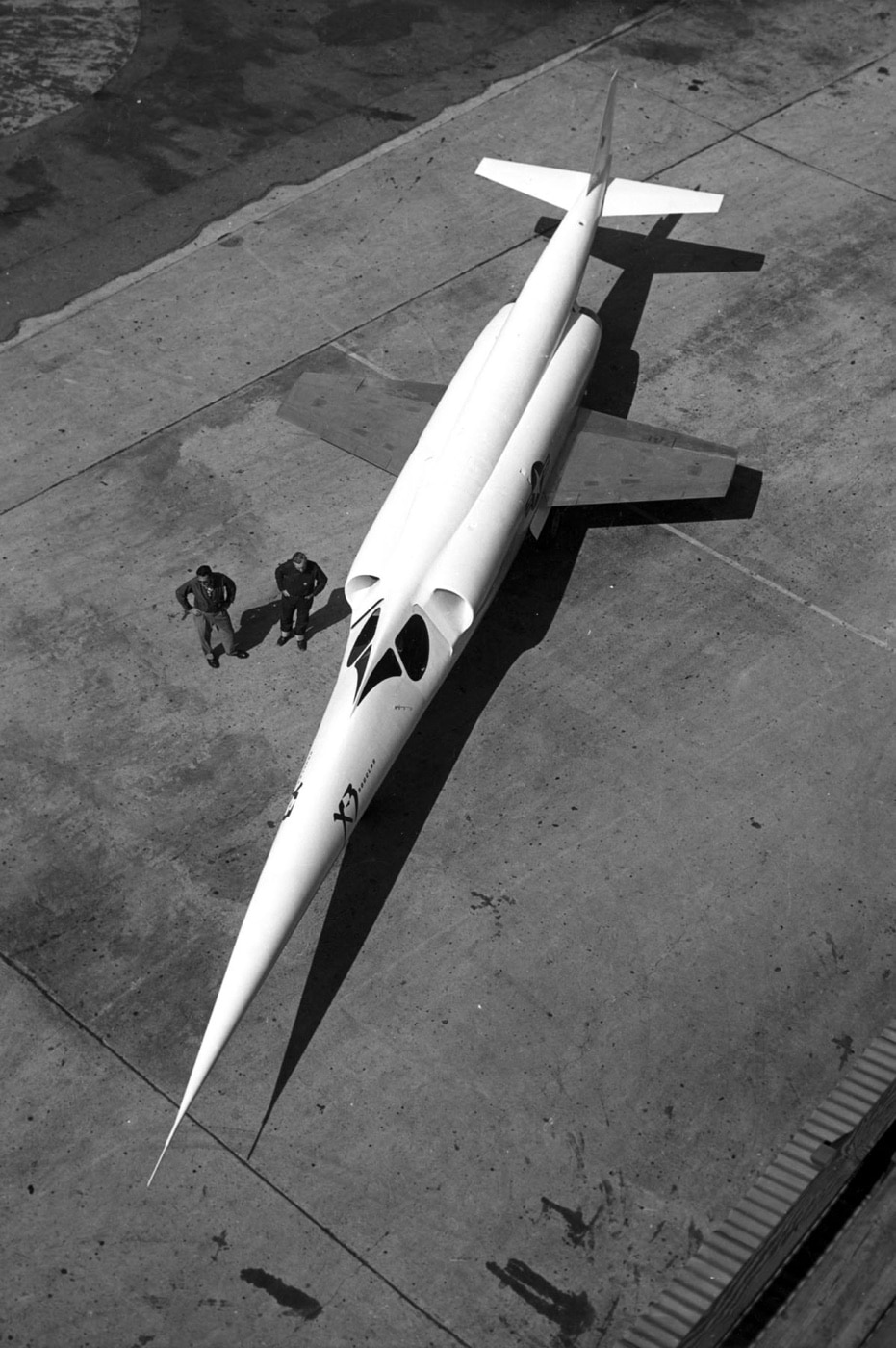
Experimental aircraft like the Douglas X-3 provide important data that can be incorporated into production planes. For example, the X-3 influenced the design of the SR-71. Image: U.S. Air Force




